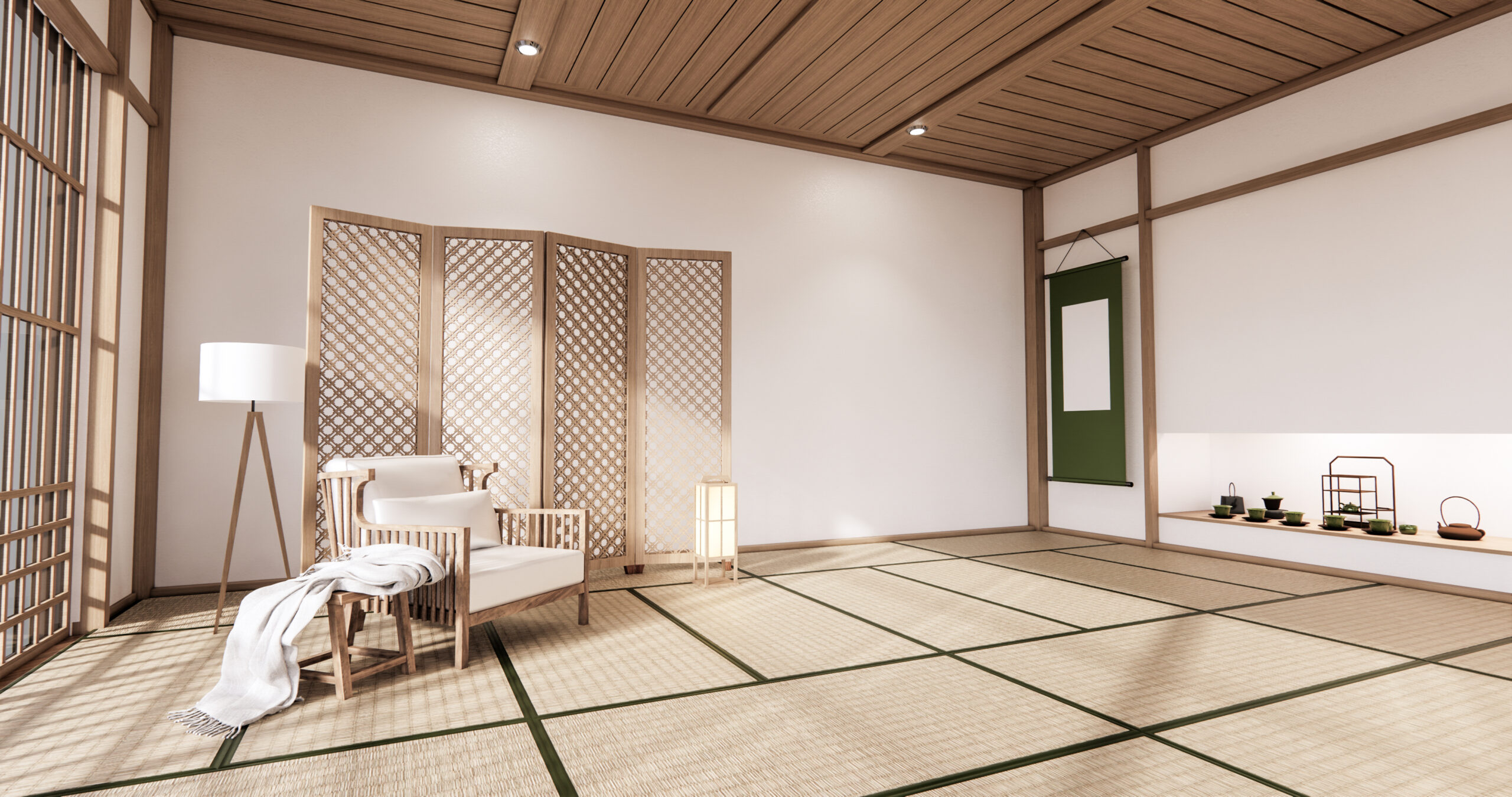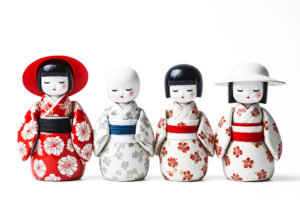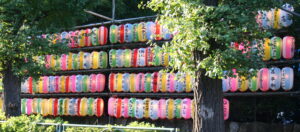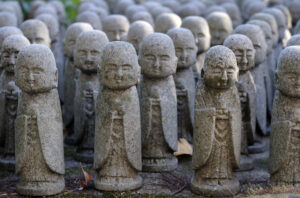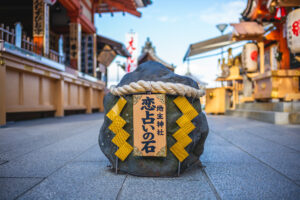In a world where modernity often overshadows tradition, the tatami mat stands as a resilient symbol of Japanese culture and heritage. This floor covering, made of woven straw and known for its distinctive texture and fragrance, has played a pivotal role in Japan’s architectural and social fabric for centuries. From the chambers of ancient imperial courts to the minimalist homes of today, tatami mats embody a blend of aesthetic simplicity and functional design that continues to captivate people both within and beyond Japan’s borders. This article delves into the various facets of tatami mats, exploring their historical significance, craftsmanship, and enduring appeal in contemporary society.
The Timeless Appeal of Tatami Mats in Japan
The allure of tatami mats in Japan is deeply rooted in their ability to evoke a sense of tranquility and natural beauty. For generations, these mats have been an integral part of Japanese homes, offering a soft, yet firm surface that complements the nation’s minimalist aesthetic. The unique texture and scent of tatami—often described as earthy and calming—create an atmosphere that is both inviting and serene. This appeal is not just sensory but also visual, as the mats’ natural colors harmonize with a wide range of interior designs, from traditional to contemporary. The longevity of tatami mats, which can last for several decades if properly cared for, further contributes to their timeless appeal, making them a cherished feature of Japanese living spaces.
Exploring the Origins of Tatami Mats
Tatami mats have a storied history that dates back to the Nara period (710-794 AD), initially used as luxury items for the nobility to sit or sleep on, distinguishing them from the commoners who sat on the bare floor. The term "tatami" is believed to originate from the verb "tatamu," meaning to fold or pile, reflecting the mat’s early design which was thinner and could be folded for storage. As Japan moved into the Heian period (794-1185 AD), the use of tatami became more widespread, evolving into the full-room mats seen today. This period marked the beginning of tatami’s integration into the architectural layout of Japanese homes, influencing room sizes and the design of traditional buildings.
Tatami Mats: From Imperial Courts to Modern Homes
Initially reserved for the imperial courts and the homes of the aristocracy, tatami mats have since found their way into the everyday lives of the Japanese populace. This transition occurred gradually over centuries, with tatami becoming a standard feature in homes of all social standings by the Edo period (1603-1868). The democratization of tatami mats played a significant role in shaping the Japanese interior, promoting a uniform aesthetic and spatial organization centered around the mat’s dimensions. Today, tatami rooms, known as "washitsu," remain a prevalent element in Japanese houses, serving various functions from living and dining rooms to bedrooms, showcasing the mat’s versatility and enduring relevance.
The Artisan Craftsmanship Behind Tatami Mats
The production of tatami mats is a labor-intensive process that demands precision and skill, traits honed by artisans over years of apprenticeship. Constructed from rice straw, rush grass, and sometimes compressed wood chips or foam for the core, tatami mats are then covered with a woven rush (igusa) surface, giving them their distinctive texture and scent. The edges are often bounded with cloth brocade, adding to their aesthetic appeal. These craftsmen, known as "tatami-shi," play a crucial role in preserving the quality and tradition of tatami making, a craft passed down through generations. The meticulous attention to detail ensures each mat is not only durable but also a work of art, embodying the Japanese ethos of wabi-sabi, the beauty of imperfection.
How Tatami Mats Define Japanese Living Spaces
Tatami mats significantly influence the design and function of Japanese living spaces. Their size and shape dictate the dimensions of a room, with traditional Japanese architecture often being described in terms of the number of tatami mats that fit inside a space. This modular system has shaped the country’s aesthetic and spatial organization for centuries. In addition to serving as flooring, tatami mats also play a key role in insulation, thanks to the natural materials’ ability to regulate humidity and temperature. The softness of the mats encourages a lifestyle spent largely on the floor, influencing everything from furniture design to social customs, further exemplifying their centrality to Japanese domestic culture.
Tatami and Tea: The Role of Mats in Tea Ceremonies
Tatami mats hold a special place in the practice of the Japanese tea ceremony, a ritualistic tradition that epitomizes the country’s cultural and aesthetic values. The tea room, or "chashitsu," is typically designed with tatami flooring, creating a setting that fosters mindfulness and harmony. The specific arrangement of the mats in the tea room is carefully considered to facilitate the flow of the ceremony, demonstrating how tatami serves not only as a practical flooring solution but also as an integral component of cultural practices. The texture, color, and even the sound of stepping on tatami contribute to the sensory experience of the tea ceremony, highlighting the mats’ ability to enhance spiritual and aesthetic engagement.
The Seasonal Role of Tatami in Japanese Culture
Tatami mats are closely tied to the changing seasons in Japan, reflecting the country’s deep connection to nature. In the summer, the natural rush grass of the mats feels cool to the touch, providing a respite from the heat. Conversely, during the colder months, tatami offers warmth and insulation, maintaining a comfortable environment within traditional Japanese homes. This seasonal adaptability is celebrated in various cultural practices, such as the custom of "tatami-biraki," where mats are aired out in the spring to refresh them for the coming year. Such rituals underscore the functional and symbolic importance of tatami mats in harmonizing with the natural world.
Navigating the Etiquette of Tatami in Japan
The use of tatami mats in Japan is accompanied by a specific set of etiquettes and customs designed to preserve their condition and honor their cultural significance. For instance, it is customary to remove shoes before stepping onto tatami to prevent damage and dirt accumulation. Additionally, certain behaviors, such as standing on the mats with heavy objects or dragging furniture, are discouraged. This respect for tatami mats extends to sitting positions, with traditional forms such as "seiza" (kneeling with the legs folded underneath the body) being preferred during formal occasions. Understanding and adhering to these etiquettes is crucial for anyone engaging with this aspect of Japanese culture, reflecting a broader appreciation for tradition and mindfulness.
Innovations and the Future of Tatami Mats
As Japan continues to modernize, tatami mats are also evolving, blending traditional craftsmanship with contemporary needs and technologies. Innovations such as lightweight, portable tatami mats and versions with improved resistance to moisture and wear are making these cultural artifacts more accessible and practical for modern lifestyles. Some manufacturers are experimenting with new materials, such as recycled and synthetic fibers, to address sustainability concerns and ensure the longevity of tatami craftsmanship. Despite these changes, the essence of tatami—as a symbol of Japanese heritage and a testament to the beauty of natural materials—remains unchanged, promising a future where tradition and innovation coexist harmoniously.
Tatami in Literature and Media: A Cultural Icon
Tatami mats have transcended their practical use to become a cultural icon in Japanese literature and media, symbolizing various facets of the nation’s identity and social nuances. In literature, tatami often sets the scene for intimate narratives, serving as a backdrop to tales of love, conflict, and family dynamics. Films and television shows frequently utilize tatami rooms to evoke a sense of tradition, authenticity, and emotional depth. Through these mediums, tatami mats are celebrated not only for their aesthetic and functional qualities but also for their capacity to convey deeper meanings and connect with audiences on a personal level.
Preserving Tradition: The Challenges Facing Tatami
Despite their enduring appeal, tatami mats face challenges in contemporary Japan, including declining demand and a shortage of skilled artisans. The shift towards Western-style housing and the increasing preference for low-maintenance flooring options have impacted the tatami industry. However, efforts to preserve this cultural heritage are underway, with artisans, enthusiasts, and cultural institutions advocating for the importance of tatami in Japanese identity. Educational programs aimed at training the next generation of tatami-shi and initiatives to promote the use of tatami in public and commercial spaces are crucial steps toward ensuring that this traditional craft survives and thrives in the modern era.
Beyond Japan: The Global Influence of Tatami Mats
The appeal of tatami mats has reached far beyond Japan’s shores, captivating individuals around the world with their unique beauty and functionality. In the realm of interior design, tatami-inspired elements are being incorporated into homes and spaces seeking to emulate the minimalist elegance and zen-like serenity associated with Japanese aesthetics. Additionally, the principles of sustainability and natural living that tatami represents resonate with global audiences increasingly concerned with environmental issues and mindful living. As tatami mats continue to inspire and influence, they serve as a bridge between cultures, demonstrating the universal appeal of simplicity, harmony, and connection to nature.
The journey of tatami mats from the palatial floors of ancient Japan to the contemporary homes and hearts worldwide is a testament to their timeless beauty, utility, and cultural significance. As we look to the future, the challenge lies in preserving the traditional craftsmanship and ethos that define tatami, while embracing innovation and adaptability. In doing so, tatami mats will undoubtedly continue to play a vital role in shaping not only the physical spaces we inhabit but also the cultural landscapes we cherish and seek to understand. Beyond mere flooring, tatami mats represent a philosophy of living in harmony with nature and each other, a principle as relevant today as it was centuries ago.
